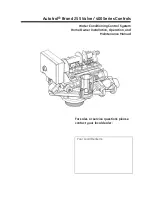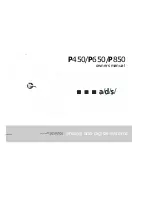
dV-DOSC dV-SUB Manual V3.0
June 2005
64
Figure 43: Defining Cutview Dimensions
Although detailed blueprints are not necessarily required, the more information that can be obtained
on a venue for defining the audience geometry, the better. Typically, plan and section views are
available for most venues upon request. In situations where such documentation is not available, there
are a number of options: use a tape measure or laser range-finder (such as the Leica Disto Basic or
Hilti PD22) on site to perform dimensional measurements. Alternatively, L-ACOUSTICS has had good
results with the Bushnell Yardage Pro 600 for field measurements. Apart from being useful for defining
room geometry, this tool can also be used for determining delay time settings during system tuning,
for locating laser beams during array trim and angle adjustment (and on the golf course on days off!).
In some cases, tribune or balcony elevations can be determined by measuring individual step
depth/height and then counting the number of steps to calculate the section depth/elevation.
The ROOM DIM sheet is provided in ARRAY 2004 to assist in calculating cutview data from on site
measurements. Room dimension calculation utilities are also available in the V-ARRAY1, V-ARRAY2,
dV-ARRAY1 and dV-ARRAY2 sheets.
Note: The calculation of elevation Z2 is susceptible to errors in distance measurements and should always
be verified with a tape measure or laser rangefinder whenever possible. Combined distance/angle
measurements are typically more accurate than distance only measurements when calculating Z2.
Figure 44: Parameters for the ROOM DIM Utility Sheet in ARRAY
Summary of Contents for dV-DOSC
Page 1: ...Version 3 0 June 2005 dV DOSC dV SUB OPERATOR MANUAL ...
Page 2: ......
Page 18: ...Figure 5 dV DOSC 3 way system configuration ...
Page 143: ...dV DOSC dV SUB Manual V3 0 June 2005 143 Figure 92 dV SUB Line Drawing ...
Page 146: ......
Page 147: ...dV DOSC dV SUB Manual V3 0 June 2005 147 ...
Page 148: ...dV DOSC dV SUB Manual V3 0 June 2005 148 ...















































